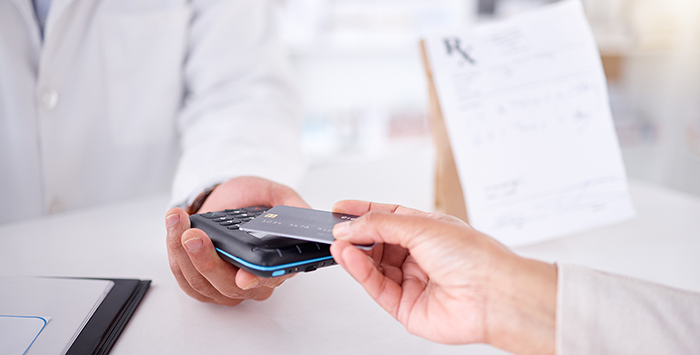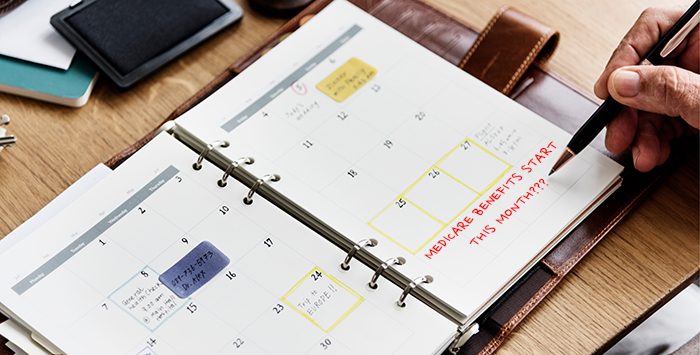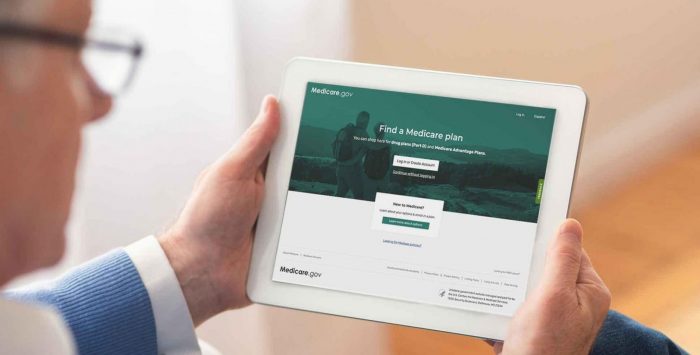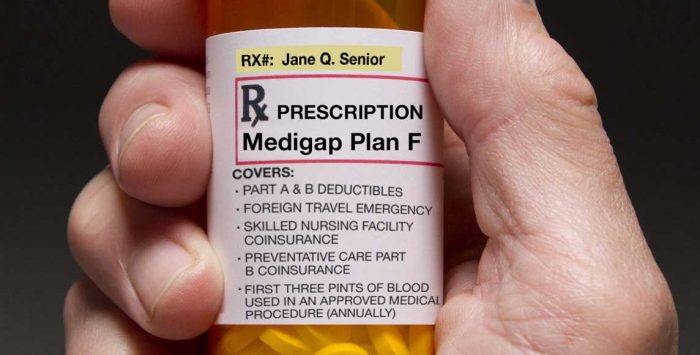Chances are you’ve seen ads promising a Medicare flex card loaded with hundreds – or even thousands – of dollars to spend on groceries, utilities, and medical expenses. These may sound like a good deal, especially if you’re living on a fixed income.
A flex card is a prepaid debit card offered by some Medicare Advantage (Part C) plans to help pay for certain health expenses. While it can be a helpful perk for some Medicare Advantage enrollees, the reality of this supplemental benefit is more nuanced than these ads suggest. Flex cards are not a government-issued benefit, and they’re not available with every plan. Additionally, not everyone qualifies, and the supplemental benefit you receive might be more limited than it seems. Before jumping in, it’s worth understanding how flex cards work, who’s eligible, and what they cover.
What is a Medicare flex card?
A Medicare flex card is a prepaid debit card offered by some Medicare Advantage plans. The card is preloaded with a set dollar amount that can be used for health-related expenses approved by the plan. Each plan determines how much money goes on the card, how often the card is replenished, and what purchases are allowed.
Plans may approve expenses like over-the-counter (OTC) medications, dental or vision copays, hearing aids, groceries, and transportation to medical appointments. The card functions like a regular debit card, but is accepted by vendors only for specific expenses approved by your insurance provider.
Health plans may use different names for their flex card benefit. For example, the Anthem Benefits Prepaid Card is the flex card offered by Anthem. UnitedHealthcare’s flex card is known as the UCard. Depending on the plan, the flex card may be issued as a separate card or combined with your insurance ID.
Medicare Advantage plans can offer flex cards because of how they’re funded.
Each year, private insurers running Medicare Advantage plans submit a bid to Medicare, estimating the average cost to cover an enrollee. If the bid is lower than the benchmark set by Medicare, a portion of the difference is returned to the plan as a rebate. These rebate dollars are then used to enhance coverage by reducing premiums, lowering out-of-pocket costs, or adding supplemental benefits like flex cards.
Who qualifies for Medicare flex card benefits?
Not all Medicare Advantage plans offer flex cards, and among those that do, eligibility can vary.
Even if your plan advertises flex card benefits, you might not qualify. Some plans offer the card to all enrollees. Others may limit it to individuals with certain health needs, such as those with chronic conditions, or those who qualify for dual coverage under Medicare and Medicaid.
Flex card eligibility also depends on where you live and which plans are available in your area. Medicare Advantage plans are regional, and benefits like flex cards are determined by the insurance company offering the plan. Original Medicare (Parts A and B) and Medicare Supplement (Medigap) plans do not offer flex cards. This benefit is exclusive to select Medicare Advantage plans.
It’s also worth noting that even if you qualify initially, your eligibility might change in future years. Insurance companies can modify their benefits, which means a plan that offers a flex card this year might not include one next year, or the eligibility criteria might be different.
What can you buy with a Medicare flex card?
What you can buy with a Medicare flex card depends entirely on the Medicare Advantage plan. Most cards are designed to help pay for everyday health-related expenses that aren’t covered under Original Medicare. Covered items may include:
- Over-the-counter medications like pain relievers, allergy, and cold medications
- Medical supplies such as bandages, thermometers, first-aid supplies, and blood pressure monitors
- Dental, vision, and hearing expenses, including copays or allowances for exams, eyeglasses, hearing aids, and cleanings
- Groceries, including healthy food items like fruits, vegetables, certain dairy products, and meats
- Transportation to and from medical appointments
- Meal and grocery delivery services for eligible members
- Wellness expenses, such as gym memberships or fees paid at certain sports facilities
Not all stores, providers, or facilities accept flex cards, and each plan has a list of approved retailers where your card can be used. (This is similar to the way health plans establish network arrangements with certain pharmacies, medical offices, and hospitals. Just as your drug coverage won’t work at every pharmacy in your town, your flex card won’t work at every retailer that sells the products and services that are covered by your card.)
How do I use my flex card?
To make a purchase with your flex card, check your plan’s list of covered items and participating vendors, which may include certain pharmacies and grocery stores.
If shopping in person, swipe or insert the card at the register. The cost of eligible items will be deducted automatically. Any item outside the approved categories or beyond your spending limit is likely to be declined at checkout.
For example, if your plan provides $100 per quarter, that’s your spending limit for that three-month period. Once you reach this limit, you’ll need to wait until the next quarter for a refill. Check your plan details to know when the funds are replenished, which can be monthly, quarterly, or at the start of the year. Many plans operate on a “use it or lose it” basis, meaning unused funds typically don’t carry over from one period to the next. But the benefit design is up to the Medicare Advantage plan, so enrollees should ask their plan whether unused benefits roll over or expire.
Online shopping is also an option with some plans. To shop online, you can generally log into your insurer’s mobile app or website to browse eligible items, place an order, and have them shipped directly to you. Many plans offer a way to track your balance and see past transactions through an app or member portal.
Is the flex card part of Original Medicare or Medigap?
No, the flex card isn’t offered by Original Medicare or Medigap plans. It’s not part of any federal program and is not free money from the government, as some ads may lead you to believe. Rather, this card is only available through certain Medicare Advantage plans offered by private insurance companies.
How do you find a Medicare Advantage plan that includes a flex card?
You can start your search using the Medicare Plan Finder tool at Medicare.gov. The tool doesn’t list “flex card” as a filter, but you can look for plans that offer “over-the-counter drugs” benefits. Take the opportunity to compare plans in your area, though keep in mind that not all plans with OTC benefits offer flex cards, and the Plan Finder doesn’t always specify whether benefits come as a card or through other methods.
Once you’ve narrowed down a few options, your best bet is to call the plans directly to ask about flex card benefits. When speaking with plan representatives, consider asking questions, such as:
- Do you offer a flex card or a similar prepaid benefit card?
- What’s the allowance amount, and does unused money on the card expire or roll over?
- What items are covered, and which retailers are participating?
- Are there eligibility restrictions beyond enrolling in the plan?
Don’t rely solely on marketing materials, as they often emphasize the benefit without explaining the limitations.
Contact your State Health Insurance Assistance Program (SHIP) for assistance. They can help you compare multiple options and explain how flex card benefits fit into the overall value of each plan. A flex card shouldn’t be your only consideration when choosing a Medicare Advantage plan. Confirm that the plan also covers your doctors, medications, and anticipated healthcare needs at a cost you can afford.
Is the Medicare flex card a scam?
Medicare flex cards are legitimate benefits offered by some Medicare Advantage plans. But scammers have seized on the confusion around this benefit to target seniors through fraudulent schemes. These scams are so widespread that government agencies regularly warn the public about them.
Common flex card scam tactics include:
- False advertisements promising “free” government flex cards with large dollar amounts, directing you to suspicious websites that may steal personal information
- Unsolicited phone calls from people claiming to be Medicare representatives offering to send you a flex card in exchange for your Social Security number, Medicare ID number, or banking details for identity theft or fraudulent billing
- Bait-and-switch tactics that trick you into enrolling in a Medicare Advantage plan when you think you’re just signing up for a flex card, which can result in losing your current coverage
- Phishing emails with official-looking logos asking you to “verify” information to receive your flex card benefits
- Fake application websites that collect sensitive information under the guise of helping you “qualify” for a card
- Robocalls using Artificial Intelligence (AI) voices that claim “new Medicare laws” make you eligible for a flex card or monthly cash rewards at no cost
Medicare will never call you unsolicited regarding your benefits, and legitimate flex cards are generally provided to eligible plan members without any extra application process or the need to request your personal information.
To protect yourself from fraud:
- Ignore unsolicited calls claiming to be from Medicare.
- Never share personal information unless you initiated the contact and verified the source.
- Use the Medicare Plan Finder to explore legitimate options.
- Sign up for the National Do Not Call Registry.
Report suspected fraud to Medicare at 1-800-MEDICARE or 1-877-486-2048 for TTY users. Visit USA.gov’s Learn Where To Report a Scam or report the scam to the Office of the Inspector General at oig.ssa.gov/report.
Is the Medicare flex card worth it?
The value of a flex card depends on your needs and how frequently you use or exhaust it. The flex card isn’t giving you extra money. It’s simply a method an insurance company uses to pay for supplemental benefits they’ve already agreed to cover.
Despite their appeal, many Medicare Advantage enrollees aren’t taking full advantage of the supplemental benefits their plans offer. While most Medicare beneficiaries (83%) report that supplemental benefits are important to them, actual usage rates vary. Only about 46% of Medicare Advantage enrollees reported using their over-the-counter medication benefit. To address this, Medicare now requires Medicare Advantage plans to send a Mid-Year Enrollee Notification each summer, listing any unused supplemental benefits and instructions for how to access them.
Some people have also raised concerns about whether using a flex card could affect their eligibility for programs like Medicaid, Supplemental Nutrition Assistance Program (SNAP) formerly known as food stamps, or housing assistance. Federal guidance has clarified that flex card benefits generally don’t count as income for these programs. But if you use the flex card to pay for rent or utility bills while receiving federal housing assistance, those amounts could be counted as income. This could potentially lead to changes in your rental assistance benefits.
Whether or not a flex card is worth it depends on how well the plan’s full range of benefits align with your needs and whether you’re likely to use these benefits. A flex card can be helpful, but it shouldn’t be the only factor when choosing a Medicare Advantage plan.
Maggie Aime is a health, wellness and medical personal finance writer. With over 25 years in healthcare and a passion for education, she draws on her rich experience across nursing specialties, case management, revenue management, medical coding, and utilization review nurse consultant roles to create content that informs, inspires, and empowers. She’s passionate about educating people about all aspects of disease prevention, health and wellness, and how to navigate the U.S. healthcare system. She’s the owner of The Write RN, LLC.





